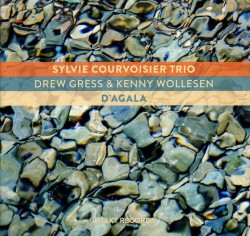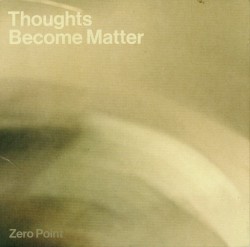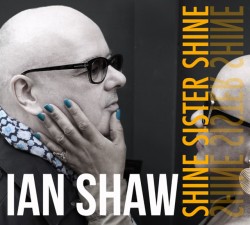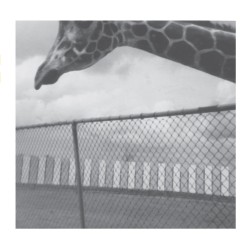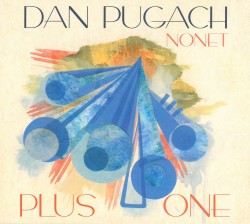More than a half-century after his recording debut, multi-reedist Roscoe Mitchell shows no sign of slowing down as a player or composer. One of the founders of the Association for the Advancement of Creative Musicians (AACM) and the Art Ensemble of Chicago (AEC), Mitchell, who also teaches, keeps the AEC going alongside experiments with ensembles ranging from duos to big bands. Many of the bigger configurations are pliable, however, so what at first appears to be a large ensemble turns out to be several subsets of musicians who more faithfully portray some of Mitchell’s thornier compositions.
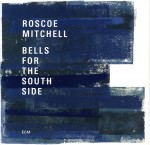 Bells for the South Side (ECM 2494/2495 ecmrecords.com), a two-CD set, is an example of this. Although an additional eight players are featured interpreting a dozen Mitchell originals, the band members – percussionists Tani Tabbal, William Winant and Kikanju Baku, trumpeter Hugh Ragin, reedist James Fei, keyboardist Craig Taborn, bassist Jaribu Shahid plus Tyshawn Sorey, who plays trombone, piano and drums – are usually divided into various-sized groups featuring Mitchell on soprano, sopranino, alto or bass saxophones, flute, piccolo, bass recorder and percussion. The resilient Winant skilfully employs tubular bells, glockenspiel, vibes and marimba during the 11 Chicago-recorded tracks, either in contrast to other instrumental motifs or as a clanging continuum. On the title track, for instance, his combination of bell shakes and bell-ringing echoes alongside washboard-like scrubs as a perfect backdrop for equivalent honks from Fei’s contralto clarinet and delicate storytelling from Ragin’s piccolo trumpet. Meanwhile, Spatial Aspects of the Sound, the leadoff track, demonstrates how tubular bell-hammering plus segmented scrapes from other players (using Mitchell’s specially constructed percussion cage) serve as discerning contrasts to formalist timbres from pianist Taborn and Mitchell’s piccolo. These sorts of meaningful challenges meander throughout the discs, as when Fei’s sopranino and Mitchell’s bass saxophone move from shrill peeps and tongue slaps to a pastoral-sounding coda; or when Shahid, Tabbal, Ragin, one pianist and Mitchell on The Last Chord work brass tweets, reed snarls, keyboard asides and bass-and-drum deliberations into a theme that extends the concept of how a free-oriented group should sound, offering simple swing and timbre scrutiny in equal measure. Slippery reed and brass excursions are as common as carefully harmonized and calming horn sequences here, as are delicate passages from vibes and piano which set off equally intense drum forays pulsating from any or all of the percussion kits. The extended and concluding Red Moon in the Sky/Odwalla wraps up these sound currents, then expands the program. Taborn’s and Fei’s electronically pushed wave-form pulsations and space-invader-like wiggles give way to martial drumming and screaming reeds that amplify the wistful, contemporary jazz narrative suggested earlier on Prelude to the Card Game, Cards for Drums, And the Final Hand, but with Ragin’s cascading grace notes and Mitchell’s nasal vibrations rejuvenating the narrative still further. Finally, the gentle swing of Odwalla, an AEC classic, is the setting for Mitchell’s mournful alto solo and some drum pitter patter.
Bells for the South Side (ECM 2494/2495 ecmrecords.com), a two-CD set, is an example of this. Although an additional eight players are featured interpreting a dozen Mitchell originals, the band members – percussionists Tani Tabbal, William Winant and Kikanju Baku, trumpeter Hugh Ragin, reedist James Fei, keyboardist Craig Taborn, bassist Jaribu Shahid plus Tyshawn Sorey, who plays trombone, piano and drums – are usually divided into various-sized groups featuring Mitchell on soprano, sopranino, alto or bass saxophones, flute, piccolo, bass recorder and percussion. The resilient Winant skilfully employs tubular bells, glockenspiel, vibes and marimba during the 11 Chicago-recorded tracks, either in contrast to other instrumental motifs or as a clanging continuum. On the title track, for instance, his combination of bell shakes and bell-ringing echoes alongside washboard-like scrubs as a perfect backdrop for equivalent honks from Fei’s contralto clarinet and delicate storytelling from Ragin’s piccolo trumpet. Meanwhile, Spatial Aspects of the Sound, the leadoff track, demonstrates how tubular bell-hammering plus segmented scrapes from other players (using Mitchell’s specially constructed percussion cage) serve as discerning contrasts to formalist timbres from pianist Taborn and Mitchell’s piccolo. These sorts of meaningful challenges meander throughout the discs, as when Fei’s sopranino and Mitchell’s bass saxophone move from shrill peeps and tongue slaps to a pastoral-sounding coda; or when Shahid, Tabbal, Ragin, one pianist and Mitchell on The Last Chord work brass tweets, reed snarls, keyboard asides and bass-and-drum deliberations into a theme that extends the concept of how a free-oriented group should sound, offering simple swing and timbre scrutiny in equal measure. Slippery reed and brass excursions are as common as carefully harmonized and calming horn sequences here, as are delicate passages from vibes and piano which set off equally intense drum forays pulsating from any or all of the percussion kits. The extended and concluding Red Moon in the Sky/Odwalla wraps up these sound currents, then expands the program. Taborn’s and Fei’s electronically pushed wave-form pulsations and space-invader-like wiggles give way to martial drumming and screaming reeds that amplify the wistful, contemporary jazz narrative suggested earlier on Prelude to the Card Game, Cards for Drums, And the Final Hand, but with Ragin’s cascading grace notes and Mitchell’s nasal vibrations rejuvenating the narrative still further. Finally, the gentle swing of Odwalla, an AEC classic, is the setting for Mitchell’s mournful alto solo and some drum pitter patter.
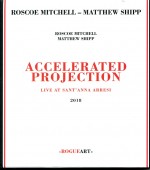 A decade previously in Sardinia (2005), Mitchell, playing alto and soprano saxophone plus flute, met pianist Matthew Shipp, with whom he had been collaborating for more than a dozen years, for seven variations on Accelerated Projection (RogueArt Rog 0079 roguart.com). In these pure improvisations, the players alternate solo passages with those moments where their thought processes could be that of a single mind. Feeling out each other’s dynamics and drawbacks, they experiment with sweeping and clattering keyboard lines, pinched reed peeps and augmentations in solo and duo configurations. By the time the fourth track arrives, though, they’ve worked out an interactive concoction. At that point, just as they’ve serenely probed every musical nuance, they rev up to hardened staccato with so many timbres packed into their playing that they threaten to overflow the sound limits. Accelerated Projection VI is the climactic synthesis, where after experimenting with inner-piano-string pulls plus ethereal flute somersaults, they limit themselves to the keyboard and saxophones. On soprano, Mitchell’s honks and split tones vibrate every note and its extensions to the limit, as Shipp turns from key dusting and caressing to high-frequency chording that echoes and links to the reed output. From that point on, an exercise in smoothing out key jiggles and overblown reed shrills leads to an instance of sophisticated tonal fusion.
A decade previously in Sardinia (2005), Mitchell, playing alto and soprano saxophone plus flute, met pianist Matthew Shipp, with whom he had been collaborating for more than a dozen years, for seven variations on Accelerated Projection (RogueArt Rog 0079 roguart.com). In these pure improvisations, the players alternate solo passages with those moments where their thought processes could be that of a single mind. Feeling out each other’s dynamics and drawbacks, they experiment with sweeping and clattering keyboard lines, pinched reed peeps and augmentations in solo and duo configurations. By the time the fourth track arrives, though, they’ve worked out an interactive concoction. At that point, just as they’ve serenely probed every musical nuance, they rev up to hardened staccato with so many timbres packed into their playing that they threaten to overflow the sound limits. Accelerated Projection VI is the climactic synthesis, where after experimenting with inner-piano-string pulls plus ethereal flute somersaults, they limit themselves to the keyboard and saxophones. On soprano, Mitchell’s honks and split tones vibrate every note and its extensions to the limit, as Shipp turns from key dusting and caressing to high-frequency chording that echoes and links to the reed output. From that point on, an exercise in smoothing out key jiggles and overblown reed shrills leads to an instance of sophisticated tonal fusion.
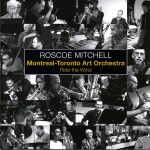 Flash forward 11 years to Toronto and Ride the Wind (Nessa ncd-40 nessarecords.com) preserves a concert Mitchell was involved in, featuring an 18-piece Montreal-Toronto Art Orchestra (MTAO) specially assembled by trombonist Scott Thomson and bassist Nicolas Caloia to play expanded arrangements, transcribed and orchestrated from some of the saxophonist’s compositions, many of which were previously recorded with Taborn and Baku in trio form. With Gregory Oh as conductor, Mitchell supervises rather than plays, except for a brief sopranino saxophone solo of boomeranging circular breathing on They Rode for Them-Part Two. So how do the Ontarians and Quebeckers fare? Quite well, especially on the CD-ending runthrough of Mitchell’s vintage Nonaah, played by a quartet of Caloia, trumpeter Craig Pedersen, alto saxophonist Yves Charuest and clarinetist Lori Freedman. A squirming chipper compendium of string bounces, tongue slaps, nimble trumpeting and reed whistles, the head gives way to a harmonized middle section, while sombre asides maintain the tune’s ambulatory pace. It’s a nimble confection to complete the multi-course sonic banquet served by the 18 players on the preceding six tracks. The sonic half-dozen pieces are pre-eminently group music, although Charuest, bassoonist Peter Lutek and pianist Marilyn Lerner, among others, manage brief interpolations. Offering the flavors derived from both notated and improvised sounds, sometimes, as on Ride the Wind, the accumulated vamps are almost symphonically orchestral, with a rumbling trombone/tuba intro booming like the initial motif of Beethoven’s Symphony No.5 before the darkened textures are balanced by decorative reed smears plus sunnier respites from flute peeps, cymbal raps and chromatic stopping from piano and vibes. More dissonant, with intermittent pacing, the other tracks include twinned instrumental passages, some as challenging as Jean Derome’s piccolo face-off with Isaiah Ceccarelli’s snare drum on They Rode for Them-Part Two, after which drum ratamacues usher in surround sound from the MTAO that takes up every remaining open space. The key instance of this mass movement is RUB, which moves without pause into Shards and Lemons. Profoundly abstract, the expressive squeaks, gurgles and small animal cries on RUB undulate sporadically until superseded by the spiritual tone poem that is the latter tune. The placid surface of orchestral harmonies is sometimes upset by trumpet peeps and trombone slurs until a harsher interlude weighted towards percussion and lower-pitched reeds enlarges the unrolling slow-motion, culminating in a crescendo that distinctively connects understated, stentorian, shrill and lowing textures into a pulsating whole.
Flash forward 11 years to Toronto and Ride the Wind (Nessa ncd-40 nessarecords.com) preserves a concert Mitchell was involved in, featuring an 18-piece Montreal-Toronto Art Orchestra (MTAO) specially assembled by trombonist Scott Thomson and bassist Nicolas Caloia to play expanded arrangements, transcribed and orchestrated from some of the saxophonist’s compositions, many of which were previously recorded with Taborn and Baku in trio form. With Gregory Oh as conductor, Mitchell supervises rather than plays, except for a brief sopranino saxophone solo of boomeranging circular breathing on They Rode for Them-Part Two. So how do the Ontarians and Quebeckers fare? Quite well, especially on the CD-ending runthrough of Mitchell’s vintage Nonaah, played by a quartet of Caloia, trumpeter Craig Pedersen, alto saxophonist Yves Charuest and clarinetist Lori Freedman. A squirming chipper compendium of string bounces, tongue slaps, nimble trumpeting and reed whistles, the head gives way to a harmonized middle section, while sombre asides maintain the tune’s ambulatory pace. It’s a nimble confection to complete the multi-course sonic banquet served by the 18 players on the preceding six tracks. The sonic half-dozen pieces are pre-eminently group music, although Charuest, bassoonist Peter Lutek and pianist Marilyn Lerner, among others, manage brief interpolations. Offering the flavors derived from both notated and improvised sounds, sometimes, as on Ride the Wind, the accumulated vamps are almost symphonically orchestral, with a rumbling trombone/tuba intro booming like the initial motif of Beethoven’s Symphony No.5 before the darkened textures are balanced by decorative reed smears plus sunnier respites from flute peeps, cymbal raps and chromatic stopping from piano and vibes. More dissonant, with intermittent pacing, the other tracks include twinned instrumental passages, some as challenging as Jean Derome’s piccolo face-off with Isaiah Ceccarelli’s snare drum on They Rode for Them-Part Two, after which drum ratamacues usher in surround sound from the MTAO that takes up every remaining open space. The key instance of this mass movement is RUB, which moves without pause into Shards and Lemons. Profoundly abstract, the expressive squeaks, gurgles and small animal cries on RUB undulate sporadically until superseded by the spiritual tone poem that is the latter tune. The placid surface of orchestral harmonies is sometimes upset by trumpet peeps and trombone slurs until a harsher interlude weighted towards percussion and lower-pitched reeds enlarges the unrolling slow-motion, culminating in a crescendo that distinctively connects understated, stentorian, shrill and lowing textures into a pulsating whole.
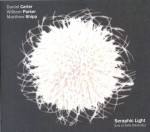 Mitchell’s influence as a polymorphous soloist and composer is enormous and is reflected in the work of other master musicians such as Daniel Carter. On the three-part improvisation Seraphic Light (AUM Fidelity AUM 106 aumfidelity.com), Carter plays soprano, alto and tenor saxophones, clarinet, flute and trumpet with frequent Mitchell collaborators Shipp and bassist William Parker. Obviously less structured than Mitchell’s work often is, Seraphic Light does confirm how an integrated combination of motion and emotion can create a narrative both spellbinding and stirring. Initially graceful and formal due to Carter’s muted trumpet grace notes, the tune shortly becomes foot-stomping swing due to Parker’s crunching and buzzing bass line, Shipp’s repetitive chording and Carter’s riffs that sprawl from moderato to altissimo. With Carter switching among so many horns and the others playing percussive when appropriate to bypass the need for a drummer, the three sometimes recalls a miniature AEC. The program’s apogee occurs midway through Part II, when carefully thought-out polyphony means that a groove is established even as each of the players creates a separate, though related, theme variation. The track culminates with this layered mass dividing into a walking bass line, segmented reed textures and connective keyboard comping. A coda as well as a culmination, Part III allows a pause to acknowledge applause on this live set, and then miraculously picks up where the previous tune ends, reaching the same energetic groove. Then the track is slowly allowed to fade via rolling piano textures, string slams from the bassist and breathy up-and-down flutter tonguing from Carter’s tenor saxophone.
Mitchell’s influence as a polymorphous soloist and composer is enormous and is reflected in the work of other master musicians such as Daniel Carter. On the three-part improvisation Seraphic Light (AUM Fidelity AUM 106 aumfidelity.com), Carter plays soprano, alto and tenor saxophones, clarinet, flute and trumpet with frequent Mitchell collaborators Shipp and bassist William Parker. Obviously less structured than Mitchell’s work often is, Seraphic Light does confirm how an integrated combination of motion and emotion can create a narrative both spellbinding and stirring. Initially graceful and formal due to Carter’s muted trumpet grace notes, the tune shortly becomes foot-stomping swing due to Parker’s crunching and buzzing bass line, Shipp’s repetitive chording and Carter’s riffs that sprawl from moderato to altissimo. With Carter switching among so many horns and the others playing percussive when appropriate to bypass the need for a drummer, the three sometimes recalls a miniature AEC. The program’s apogee occurs midway through Part II, when carefully thought-out polyphony means that a groove is established even as each of the players creates a separate, though related, theme variation. The track culminates with this layered mass dividing into a walking bass line, segmented reed textures and connective keyboard comping. A coda as well as a culmination, Part III allows a pause to acknowledge applause on this live set, and then miraculously picks up where the previous tune ends, reaching the same energetic groove. Then the track is slowly allowed to fade via rolling piano textures, string slams from the bassist and breathy up-and-down flutter tonguing from Carter’s tenor saxophone.
The musical advances which Mitchell helped pioneer are still being showcased and extended by himself and others, 50 years on.
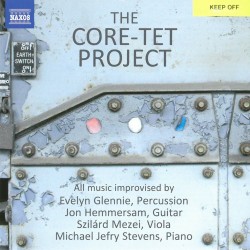 The Core-Tet Project
The Core-Tet Project

